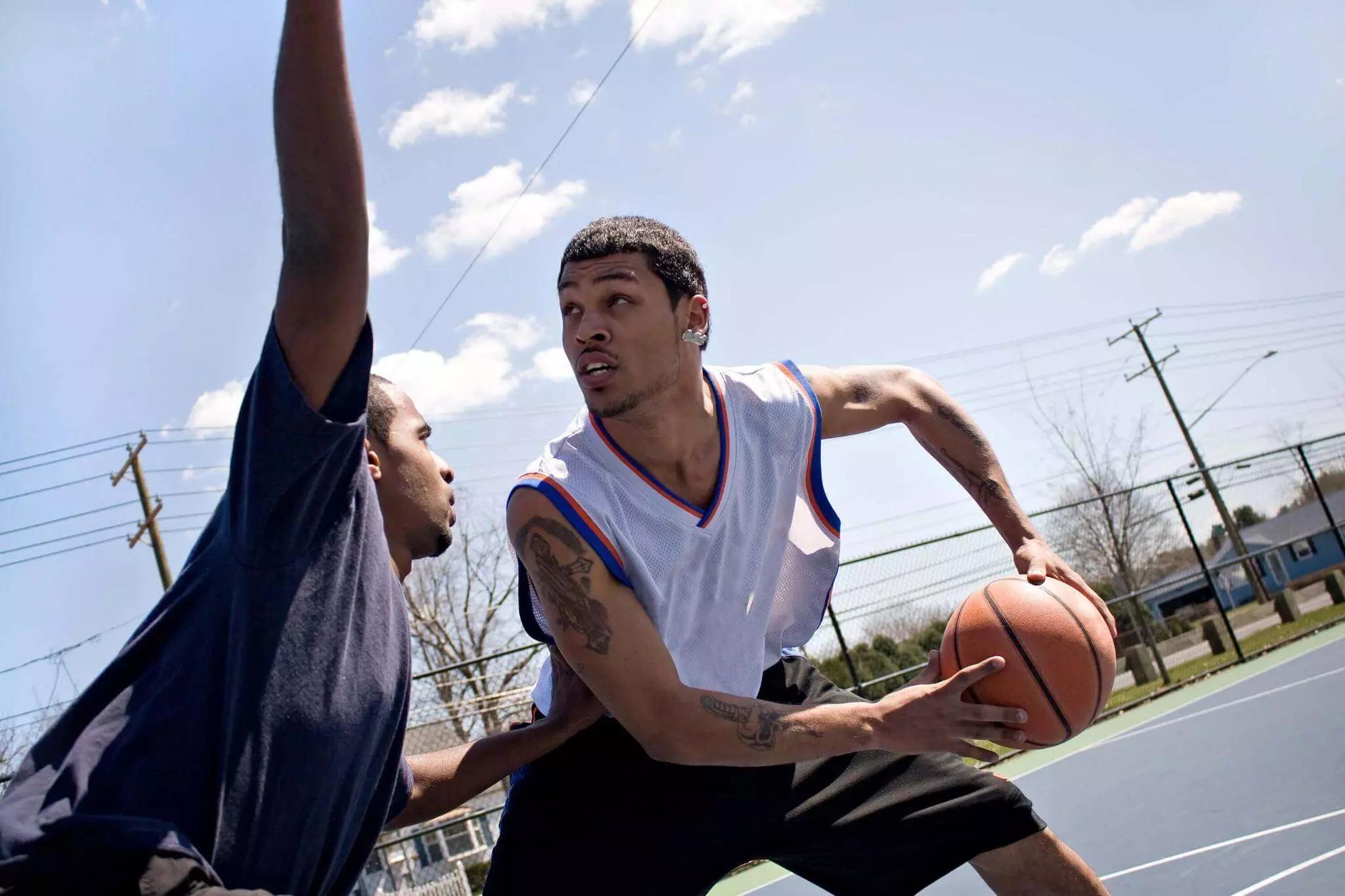Despite this, there are numerous basketball fouls and violations that you should be aware of. Why do blocks and charges have different names? What was the deal with that screen? With such hand motions, the officials are trying to communicate something. Some of the most common infractions and penalties are listed here.

Content
PERSONAL BASKETBALL FOULS:
Holding the Opponent from Moving
The act of grabbing an opponent by the hands to prevent them from moving or progressing, whether with or without the ball, is referred to as a handball.
Pick/Screen That Is Illegal
While setting a screen or pick, a basketball player loses position if they don’t keep their current position. Screening must be done at a complete halt.
Excessively use of Elbows
It happens when a player uses their elbows excessively and injures another opponent as a result.
Make a Touch with an Attacking Player
To make touch with an attacking player without establishing position, giving adequate space, or being in the charge circle, a defender is said to be in the charge circle.
VIOLATIONS:
Traveling to Change your Pivot Foot
After two steps without the ball, or after more than two steps without dribbling. To travel is to change your pivot foot after picking up the dribble and continue forward.
Use of Palm on the Basket Ball
Any time the palm of the hand on the basketball is positioned too far to the side or beneath it while a player is dribbling it.
Violations of the Free-Throw Rule
Every player must stay in position until the free throw shooter shoots the ball. Free throws are only worth one if the shooter is in the free throw lane when he releases the ball; else, the shot is null and void. A second chance is given to the shooter if the defender enters the free throw lane too early.
The Importance of Understanding Fouls in Basketball
Fouls are not just penalties; they shape the rhythm of the game. Teams must balance aggressive play with discipline. Too many fouls lead to free throws, foul-outs, or even suspensions. Players who understand fouling rules can adjust their style of defense, anticipate offensive moves, and avoid unnecessary penalties.
For example, a player with four fouls late in the game must play carefully. Coaches often substitute them to prevent disqualification. This shows how fouls influence coaching decisions, player rotation, and late-game strategies.
Types of Personal Fouls in More Detail
Beyond the examples listed above, basketball recognizes multiple forms of personal fouls:
- Blocking Foul – When a defender doesn’t establish a legal guarding position before contact.
- Charging Foul – When an offensive player runs into a defender who has established position.
- Reaching-In Foul – Called when a defender tries to steal the ball but makes illegal contact.
- Over-the-Back Foul – Occurs during rebounding when a player jumps over an opponent from behind.
- Flagrant Foul – Severe or unsportsmanlike contact that may result in free throws and ball possession.
These fouls not only penalize the individual player but also affect the team’s defensive pressure and overall momentum.
The Concept of Violations in Basketball
Violations differ from fouls because they don’t involve illegal physical contact. Instead, they are mistakes in handling the ball or positioning. While fouls often result in free throws, violations usually lead to turnovers, giving the opposing team possession.
Common violations include:
- Double Dribble – When a player dribbles, stops, and then dribbles again.
- 3-Second Violation – Offensive players cannot stay in the paint for more than three seconds.
- 8-Second Violation – Teams must advance the ball past half-court within 8 seconds.
- 24-Second Shot Clock Violation – The offense must attempt a shot before the clock expires.
How Referees Signal Fouls and Violations
Fans often notice referees using hand gestures after blowing the whistle. These signals are a universal language in basketball:
- A blocking foul is signaled with hands on the hips.
- A charging foul is signaled by a referee punching one hand into the other.
- A traveling violation is indicated by rolling fists in front of the body.
- A technical foul is shown by forming a “T” with the hands.
Learning these gestures helps fans understand the game better and follow the action without confusion.
Technical Fouls and Their Role
A technical foul is not about contact but about behavior. It can be called on players, coaches, or even fans for unsportsmanlike conduct, arguing excessively, or delaying the game. Unlike personal fouls, technical fouls carry heavier penalties—often resulting in free throws for the opposing team and loss of possession.
Strategy and Fouls
Basketball strategy often involves calculated fouling. For instance:
- Hack-a-Player Strategy – Teams foul poor free-throw shooters intentionally to limit their scoring.
- End-of-Game Fouling – Teams foul to stop the clock and increase chances of regaining possession.
This shows that fouls are not always mistakes—they can be tactical moves. However, using this too often can backfire if the opponent makes their free throws.
Impact on Player Development
For young players learning basketball, understanding fouls and violations helps them build discipline. Coaches emphasize playing hard but within the rules. Too much aggressive play without knowledge of regulations can lead to frustration, turnovers, and reduced playing time.
Famous Fouls in Basketball History
Basketball history is filled with moments where fouls decided games:
- The 1997 NBA Finals Game 5 where critical foul calls affected Michael Jordan’s legendary “Flu Game.”
- The 2010 NBA Finals Game 7 where foul trouble influenced rotations, eventually leading the Lakers to victory.
- Controversial foul calls in college basketball March Madness tournaments that sparked debates worldwide.
These examples prove how fouls aren’t just technicalities—they can define legacies.
How Players Avoid Fouls and Violations
- Defensive Footwork – Good positioning helps avoid reaching fouls.
- Body Control – Staying balanced reduces charging fouls.
- Awareness of the Shot Clock – Prevents unnecessary violations.
- Practice Dribbling Techniques – To avoid carrying or double dribble.
Elite players combine skill and awareness to play aggressively while minimizing fouls.
Conclusion: Fouling and Violation
You can keep your plays crisper and your games safer if you have a better awareness of the basketball fouls and violations that are taking place on the field. You can stay on the court and avoid getting into trouble if you are aware. Don your basketball shoes, get on the court and shoot some free throws with a better understanding of the game’s regulations now.
FAQs
What is the difference between a foul and a violation in basketball?
A foul involves illegal physical contact, while a violation relates to improper movement or ball handling. Fouls may lead to free throws, while violations usually result in turnovers.
How many fouls does it take to foul out in basketball?
In the NBA, a player fouls out after six personal fouls. In college basketball, players are disqualified after five fouls.
What is a flagrant foul?
A flagrant foul is severe, unnecessary, or intentional contact. It can be classified as Flagrant 1 (unnecessary) or Flagrant 2 (unnecessary and excessive, leading to ejection).
Can a team foul strategy actually win games?
Yes. Teams sometimes intentionally foul poor free-throw shooters or foul in the last minutes to stop the clock. However, this can backfire if the opponent converts free throws.
What happens if a technical foul is called?
The opposing team is awarded free throws, and in most cases, also possession of the ball. Multiple technical fouls can lead to player or coach ejection.

Oliver Greene is a sports geek at heart. From iconic moments to rising stars, he’s here to share his love of sports and the stories that make them special.
